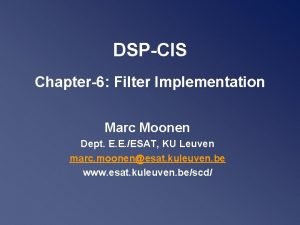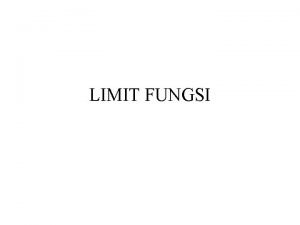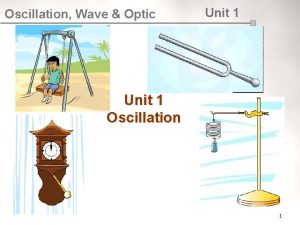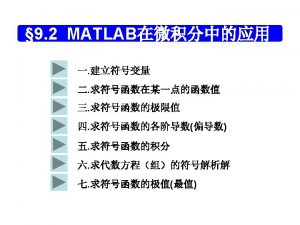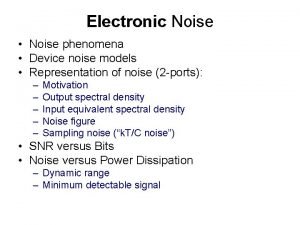LIMIT CYCLE OSCILLATION AND NOISE POWER SPECTRUM Limit


![Limit Cycles Example: y[k] = -0. 625. y[k-1]+u[k] 4 -bit truncation (instead of rounding) Limit Cycles Example: y[k] = -0. 625. y[k-1]+u[k] 4 -bit truncation (instead of rounding)](https://slidetodoc.com/presentation_image_h2/7943a1de974b4bb54350211f4398039d/image-3.jpg)





- Slides: 8

LIMIT CYCLE OSCILLATION AND NOISE POWER SPECTRUM

Limit Cycles Statistical analysis is simple/convenient, but quantization is truly a non-linear effect, and should be analyzed as a deterministic process. Though very difficult, such analysis may reveal odd behavior: Example: y[k] = -0. 625. y[k-1]+u[k] 4 -bit rounding arithmetic input u[k]=0, y[0]=3/8 output y[k] = 3/8, -1/4, 1/8, -1/8, . . Oscillations in the absence of input (u[k]=0) are called `zero-input limit cycle oscillations’
![Limit Cycles Example yk 0 625 yk1uk 4 bit truncation instead of rounding Limit Cycles Example: y[k] = -0. 625. y[k-1]+u[k] 4 -bit truncation (instead of rounding)](https://slidetodoc.com/presentation_image_h2/7943a1de974b4bb54350211f4398039d/image-3.jpg)
Limit Cycles Example: y[k] = -0. 625. y[k-1]+u[k] 4 -bit truncation (instead of rounding) input u[k]=0, y[0]=3/8 output y[k] = 3/8, -1/4, 1/8, 0, 0, 0, . . (no limit cycle!) Example: y[k] = 0. 625. y[k-1]+u[k] 4 -bit rounding input u[k]=0, y[0]=3/8 output y[k] = 3/8, 1/4, 1/8, . . Example: y[k] = 0. 625. y[k-1]+u[k] 4 -bit truncation input u[k]=0, y[0]=-3/8 output y[k] = -3/8, -1/4, -1/8, . . Conclusion: weird, … !

Limit Cycles Limit cycle oscillations are clearly unwanted (e. g. may be audible in speech/audio applications) Limit cycle oscillations can only appear if the filter has feedback. Hence FIR filters cannot have limit cycle oscillations. Mathematical analysis is very difficult Truncation often helps to avoid limit cycles (e. g. magnitude truncation, where absolute value of quantizer output is never larger than absolute value of quantizer input (=`passive quantizer’)). Some filter realizations can be made limit cycle free, e. g. coupled realization, orthogonal filters (see below).

OVERSAMPLED PCM CONVERTERS Noise spectrum when sampled at f. S >> 2 f. B Assume quantization noise is uniformly distributed, white and uncorrelated with the signal. Noise power folds back to –f. S/2 to f. S/2, oversampled converters have lower noise power within the signal band. Out of band noise can be removed by a digital filter following the PCM converter. 5

OVERSAMPLED PCM CONVERTERS We define Power Spectral Density of the output random Process is given by For an oversampled PCM converter |Hx(f)| = |He(f)| = 1. White noise assumption states that Pe(f) = Se 2(f)/fs which implies Pey(f) = Sey 2(f)/fs. Thus the in band noise power is given by 6

OVERSAMPLED PCM CONVERTERS We now see that the SNR ratio for this converter is The spectrum of the (over) sampled signal can represented as follows: 7

OVERSAMPLED PCM CONVERTERS “ 16 -bit resolution digital audio” Oversampled 8 -bit converter to be used. To get an SNR = 110 d. B with f. B = 20 k. Hz, we need f. S 2. 64 GHz. This is still not good enough since the sampling frequency is too high. Further improvement can be obtained if noise shaping is used. 8
